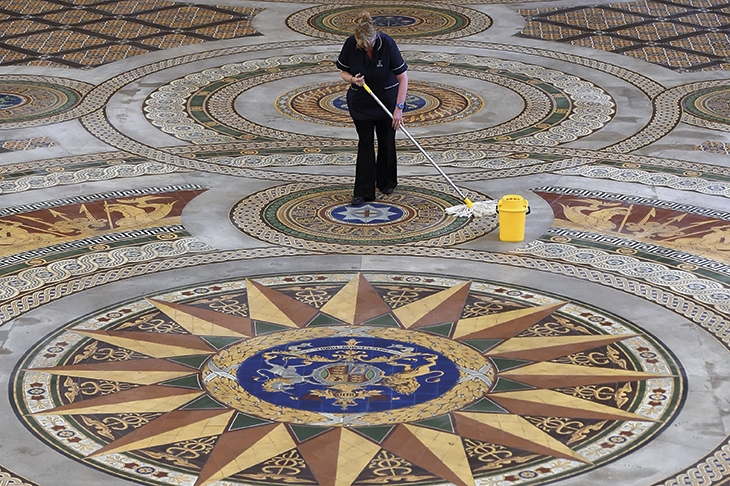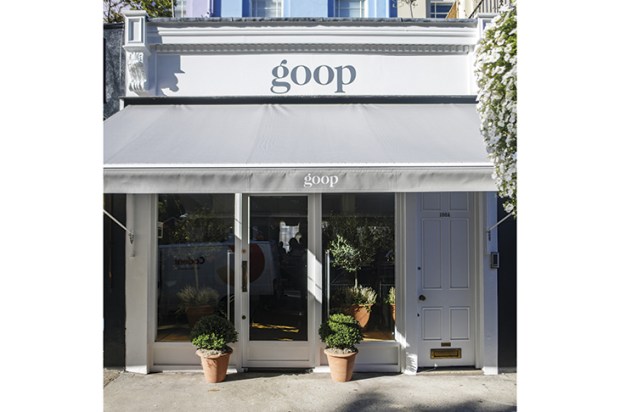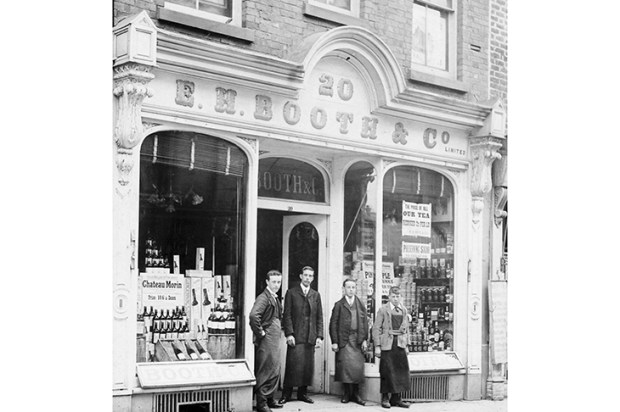It’s only since I moved to Staffordshire that I’ve come to appreciate that some of the finest works of public art aren’t on the walls of great buildings, but on their floors. Staffordshire, of course, is the home of Minton tiles — one of the most successful British exports of the Victorian era.
The company was founded by Thomas Minton in Stoke-on-Trent, but it was his son, Herbert, who cracked the tile market. In the 1820s Herbert became obsessed with the idea of making medieval-style encaustic tiles, which create a pattern using different colours of clay rather than a glaze. Encaustic tiles are centuries old, but were too expensive to produce at scale. It wasn’t until 1840 that Herbert discovered the method for mass production that made it possible to create the most beautifully intricate tile patterns at a fraction of the cost.
Large orders for floor tiles soon followed, including from Augustus Pugin for the interiors of the new Palace of Westminster. Pugin was said to have sketched his tile designs on the train from London to Stoke, and the most striking of his creations are the swirling leaves and gothic lions of the red, blue and gold tiles in St Stephen’s Hall.
In time, Minton tiles were installed in some of the most important civic and religious buildings in the country. Not everyone was impressed, though. After Mintons were used in the renovation of St Margaret’s Church, Westminster, The Builder magazine complained: ‘It is surprising that people cannot apparently be happy or devotional in church now without the glitter of glazed tiles, which form really a very commonplace and tawdry source of effect.’
Encaustic tiles were popular with architects because unlike printed patterns they keep their colour and shape as they are worn down, meaning they can be walked over for many years without signs of wear. That’s why Minton tiles were selected for extensions to the US Capitol building in 1856. The tiles were shipped in 500kg crates, with 1,000 different patterns used in the corridors alone.
Different parts of the Minton company were merged and dissolved in the 1900s, and for a while the encaustic method was lost. Thankfully, Minton tiles are back in fashion now and there’s a thriving market in traditional encaustic restoration. When the tiles in parliament were replaced, Pugin’s originals were sold by the Palace for £200 a pop.
Mintons inspire a remarkable devotion. In 2009, 60 couples entered a competition to hold the first ever marriage on the magnificent golden tiles at St George’s Hall in Liverpool (preserved under floorboards for most of the year). In the UK the Tiles & Architectural Ceramics Society, responsible for the wonderfully named Glazed Expressions magazine, track down Minton and other Victorian tiles and keep an online record of their location.
I’ve become a little obsessed with trying to spot Minton tiles on my daily walks in Staffordshire. You can see the tiles on doorsteps, and occasionally catch a glimpse of a brightly coloured Minton hallway. It’s one of the lovely things about Mintons — they are one of the few types of art you’ll find in both palaces and ordinary homes.
Got something to add? Join the discussion and comment below.
Get 10 issues for just $10
Subscribe to The Spectator Australia today for the next 10 magazine issues, plus full online access, for just $10.
You might disagree with half of it, but you’ll enjoy reading all of it. Try your first month for free, then just $2 a week for the remainder of your first year.















Comments
Don't miss out
Join the conversation with other Spectator Australia readers. Subscribe to leave a comment.
SUBSCRIBEAlready a subscriber? Log in